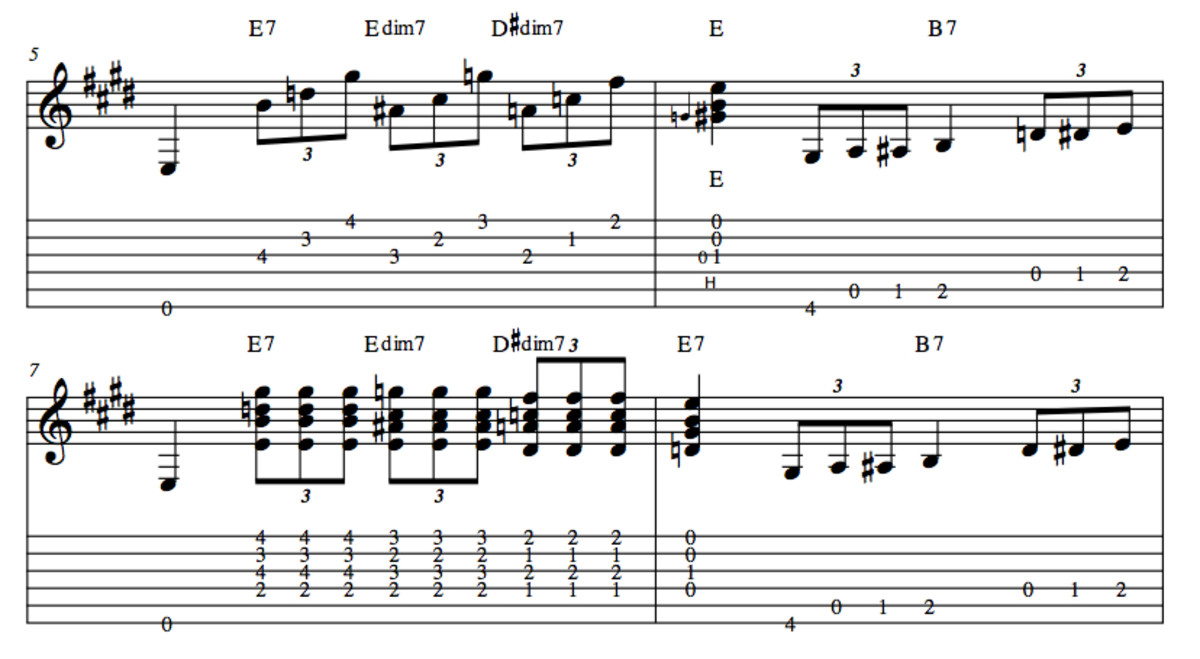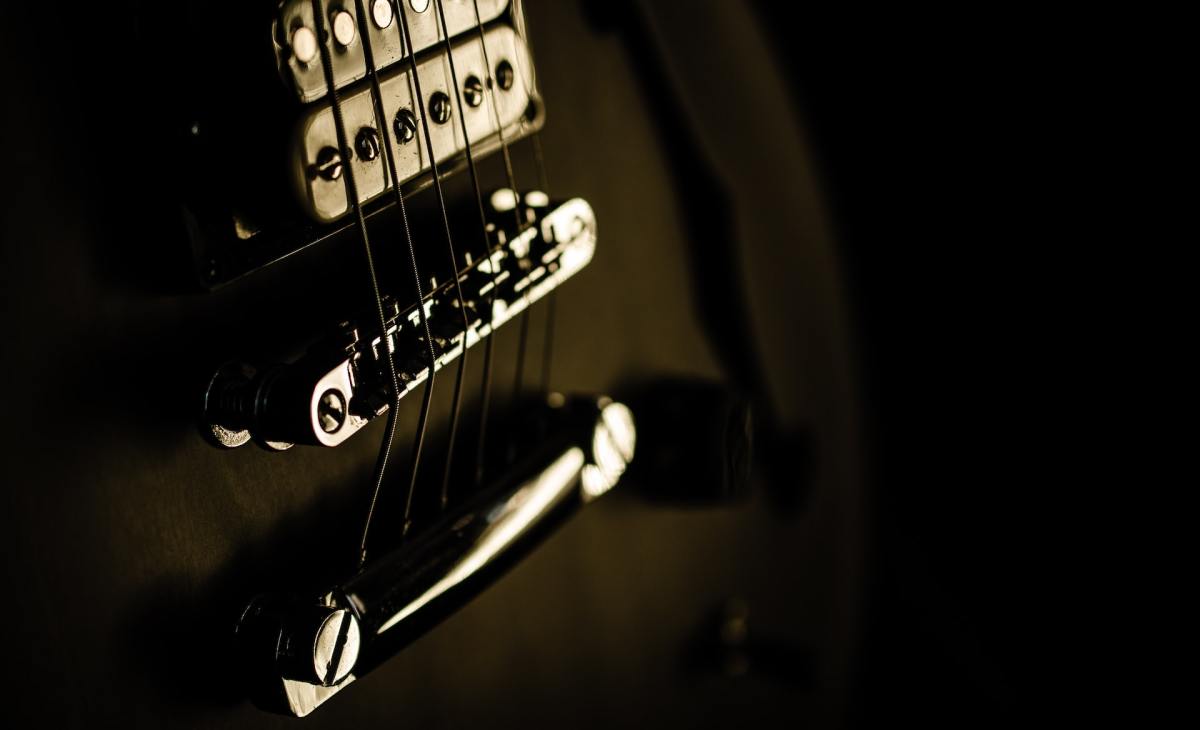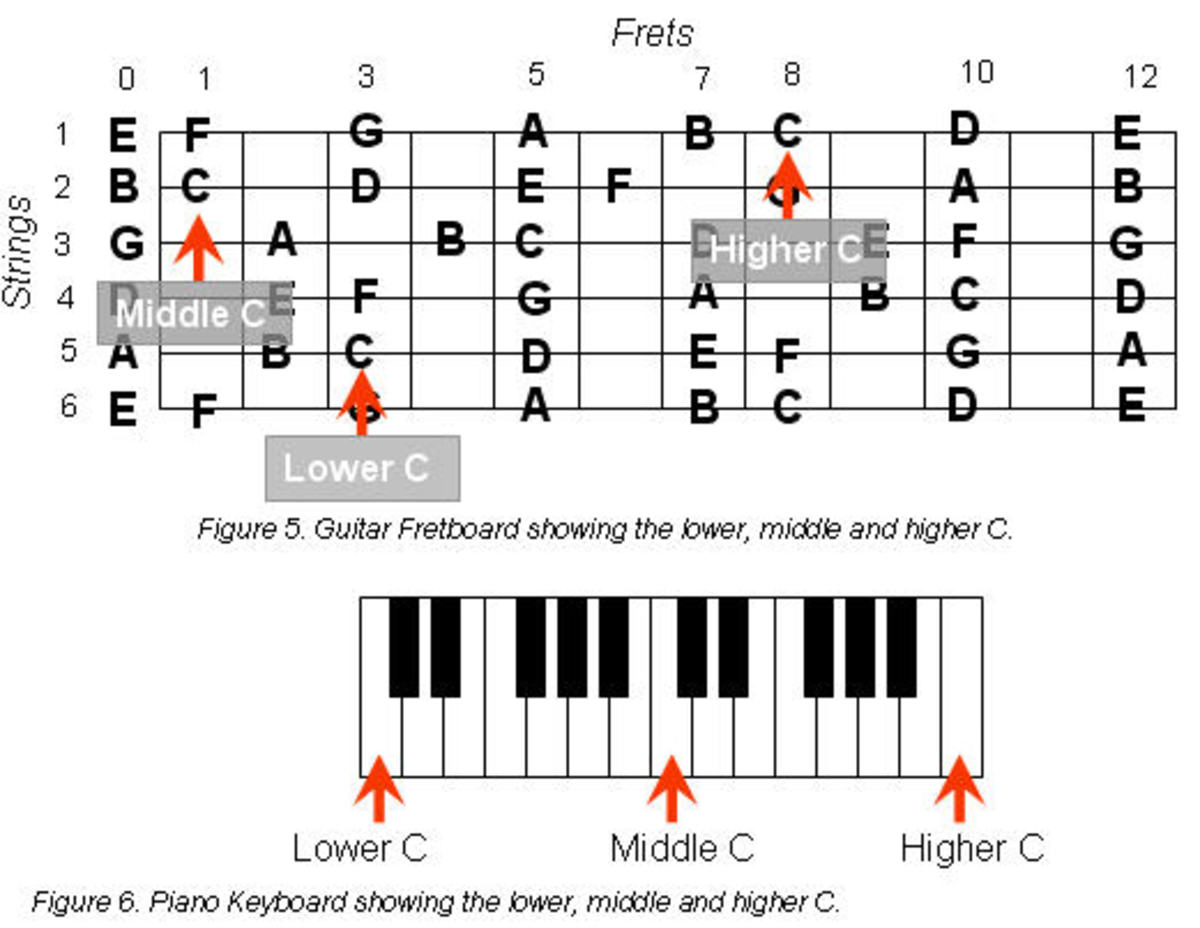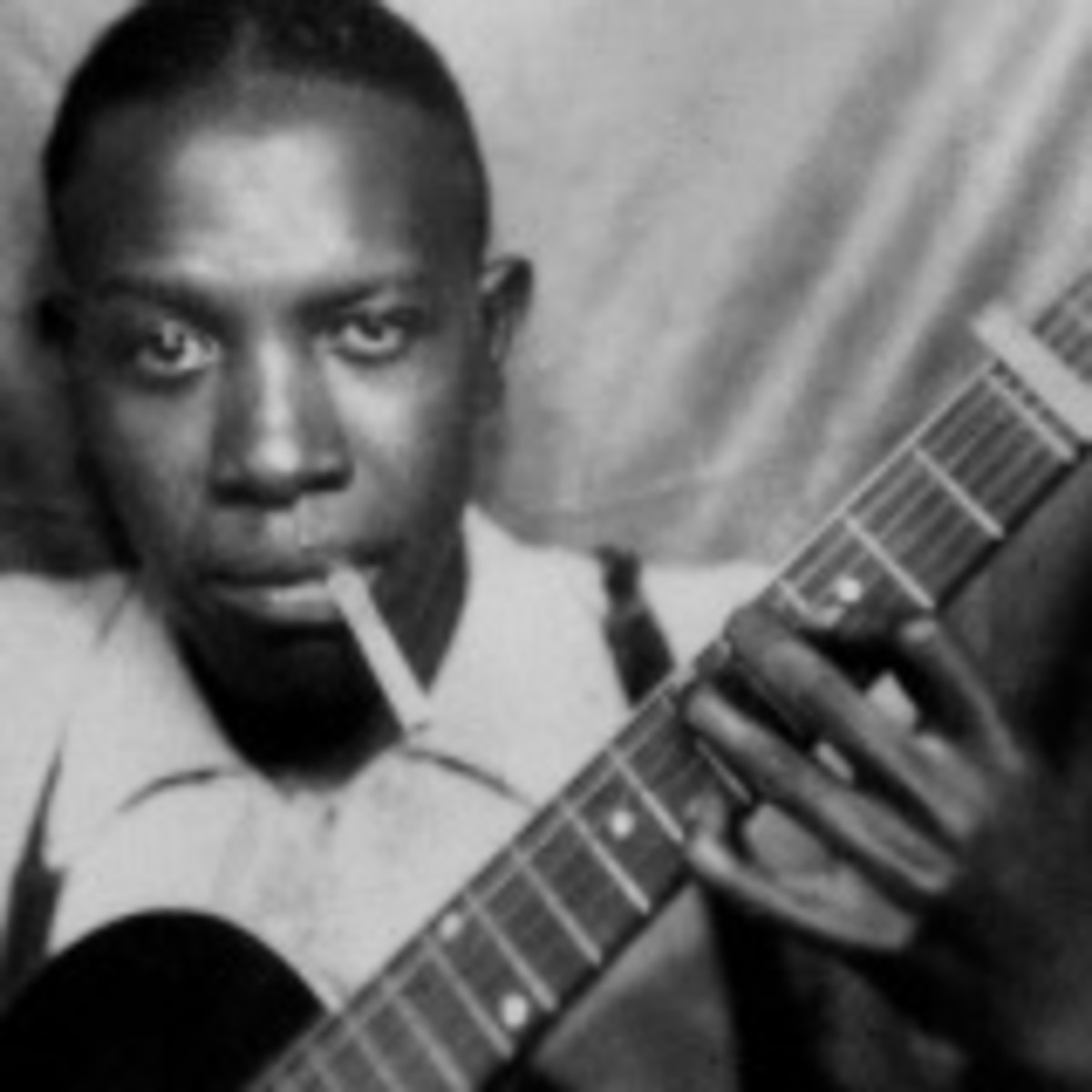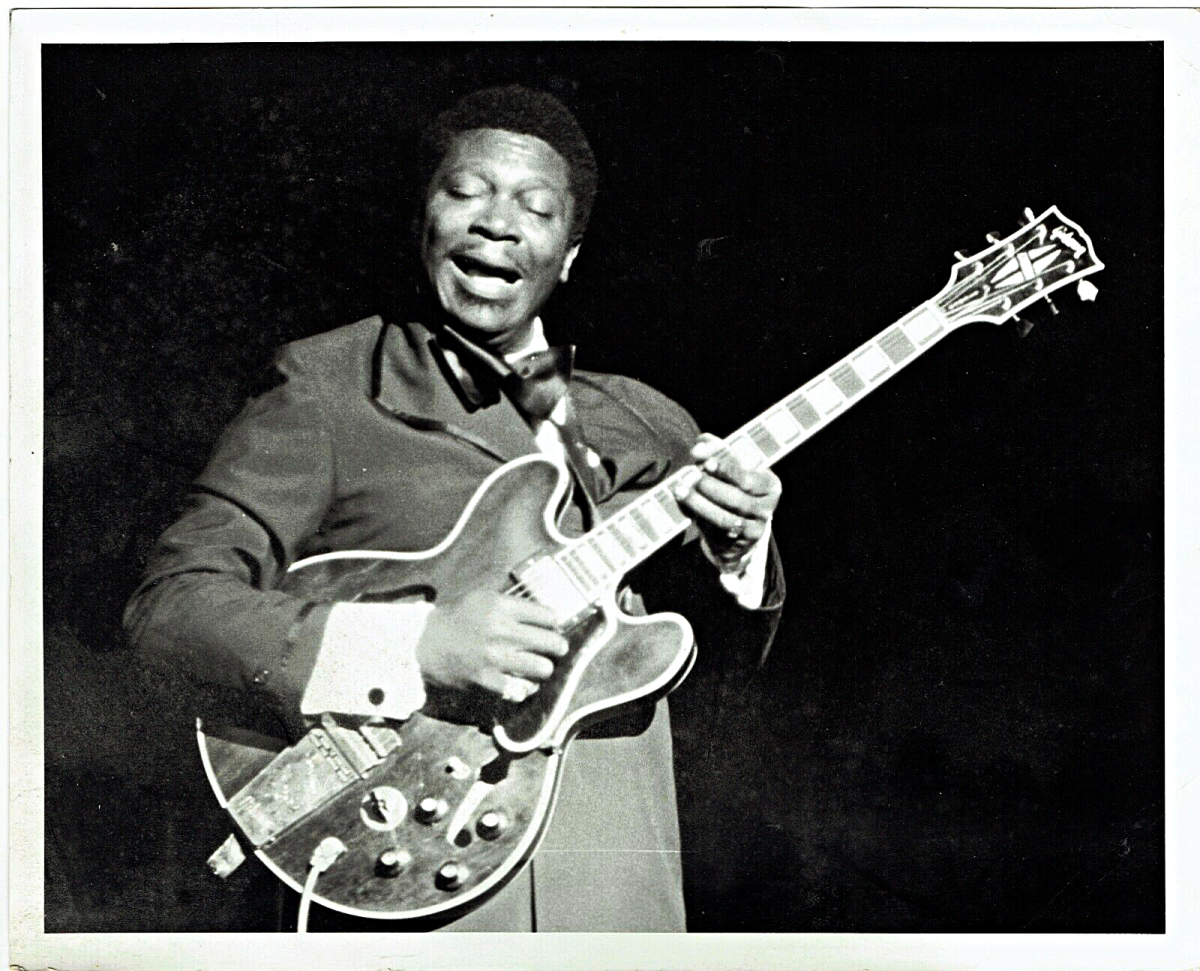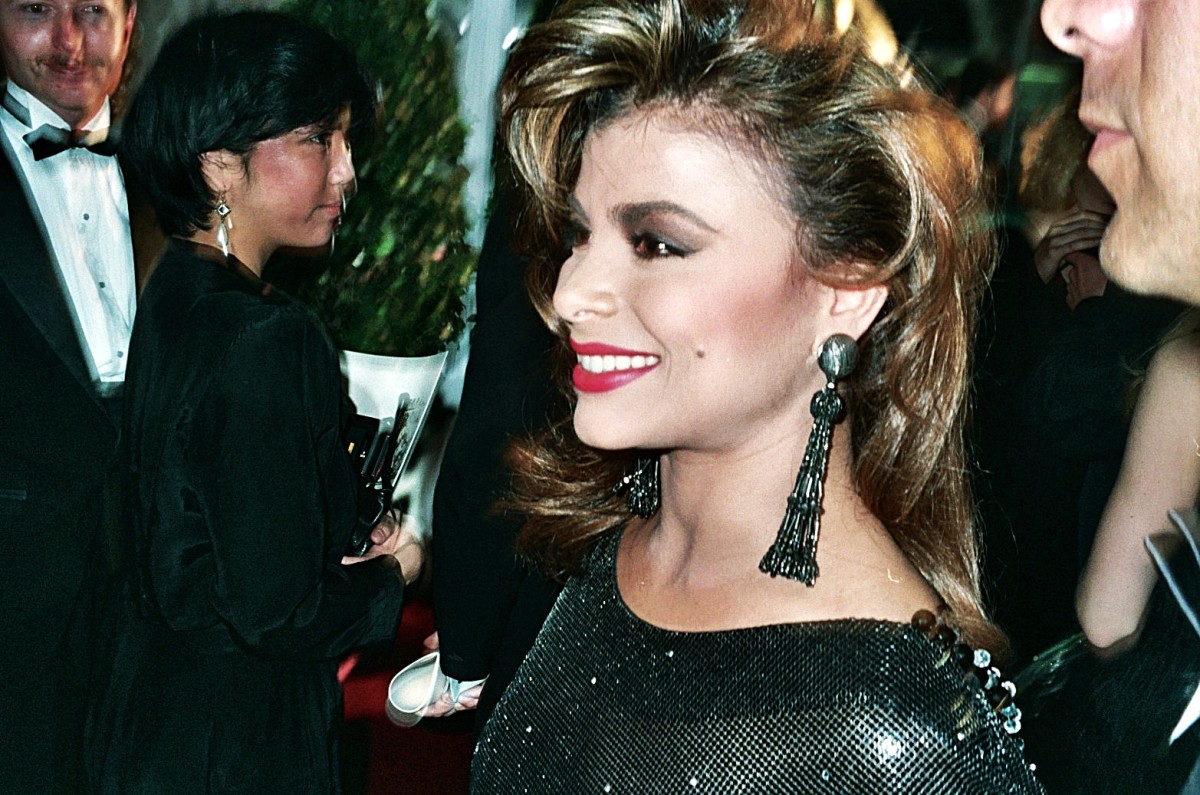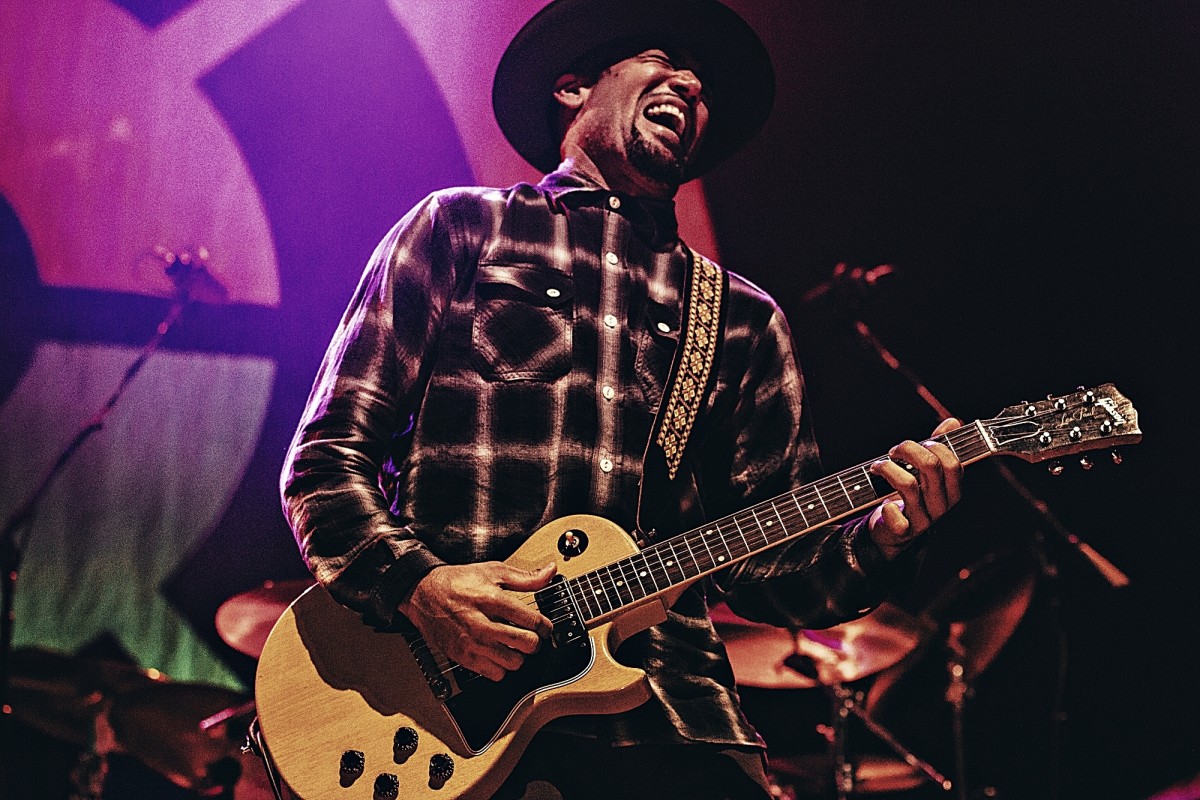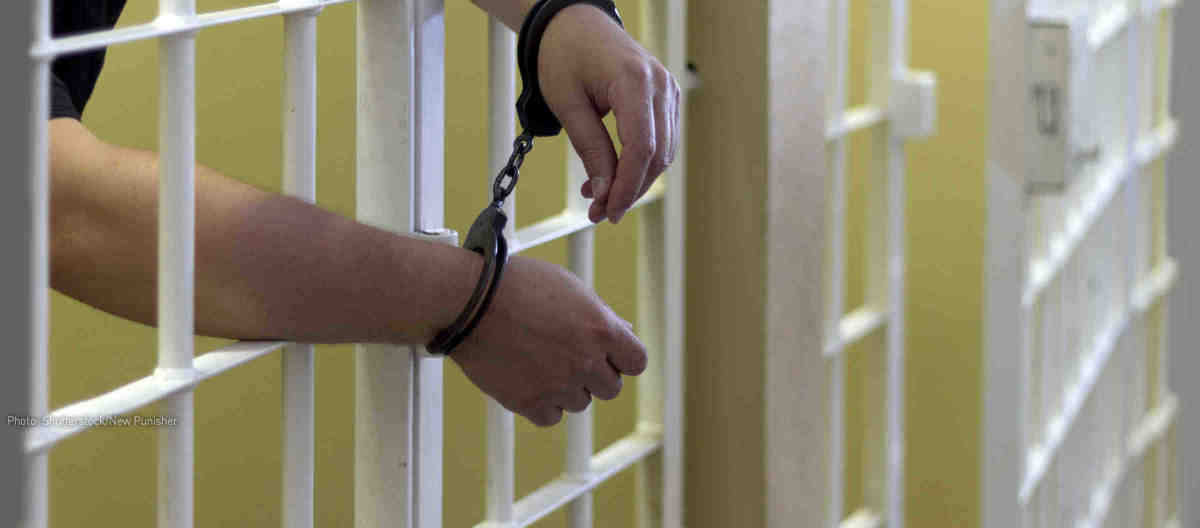Guitar Lesson - Easy Blues Guitar
Guitar for beginners
Here is some easy guitar material to get you started on guitar. The chord pictures below show an Em chord, a good starting point - the small m means minor. Use your first two fingers to play this chord - note that you are in fret 2, and the thickest string is on the left of the chord picture. Play all the strings.
Next, move the shape across one string, and add another finger on the end - you should now have the A chord shape shown in the picture.
Third chord is E - first finger goes on string 3, second finger goes on string 5. For string numbering, see next diagram. String 1 is the thinnest, string 6 is the thickest and lowest sounding string. When this is comfortable try sliding the whole shape up one fret, to make a Spanish or flamenco sound.
Easy Blues chords and guitar tab
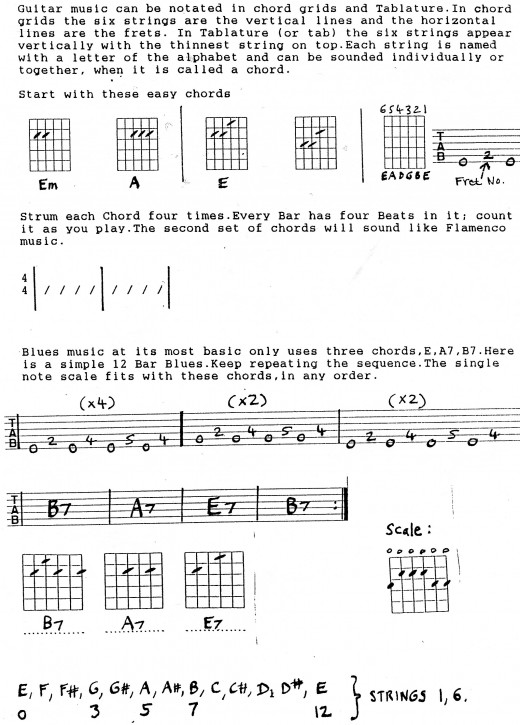
12 - Bar Blues
Now try the guitar tab 12 - Bar Blues. The first pattern repeats 4 times, (x4) the second pattern is the same, but across one string, then it's back to the first pattern again. Make sure you follow the repeats, shown as x2 etc. You can also play both strings together, instead of in sequence.
Finally strum the chords, 4 times each chord. Keep it steady and slow. The B7 chord can be harder, because it uses four fingers. You can dispense with the note on the high E string, which you don't really need, and it will be a lot quicker to change chords this way.
A scale that works with these riffs and chords is shown in the last chord picture. It's called Em pentatonic, as there are only 5 different notes in the scale.
Playing the scale pattern:
- Starting on string 1, the thinnest string, play fret 3 then open string (o)
- String 2 , same thing
- String 3, fret 2 to open string, etc.
- Notice that you are either in fret 3 or fret 2 for all the strings
- It's easier to use a pick for this
Note order
Finally, here is the order of notes on strings 1 and 6, which are both tuned to E. If you learn this sequence well it will save you a lot of time in the long run. Fret numbers are posted against the most important notes to learn in order to navigate the guitar neck.
All the notes are named with sharp signs - but these notes could also be named with flat signs instead. So F sharp and G flat are the same note, and the same principle applies to all the other notes.
It's really essential to learn this sequence of notes. A lot of guitar players don't, and it will really slow down progress.
- Apply the note naming to other strings
- Start with fret 2 on string 4 - this is an E note
- Fret 3 will be F, fret 4 will be F sharp, following exactly the same sequence
- On string 2, fret 5 will be an E
- Fret 6 will be an F, Fret 8 will be a G
Learning guitar fast
In this mini lesson we have worked on several different approaches:
- Chords
- Riffs
- Scales
- Note naming theory
- If you play this material with a friend, you can see how the chords and scales can be used together

